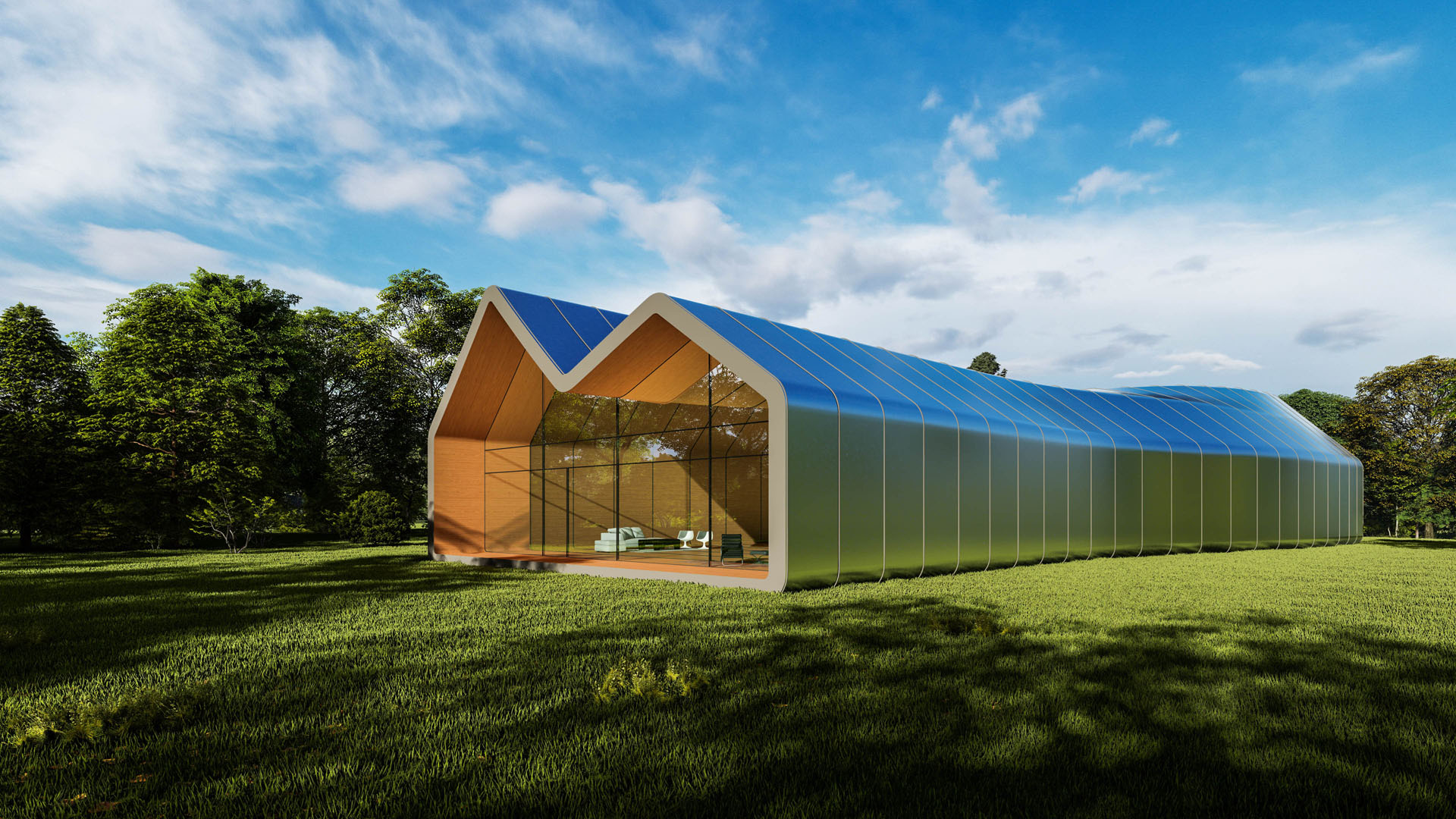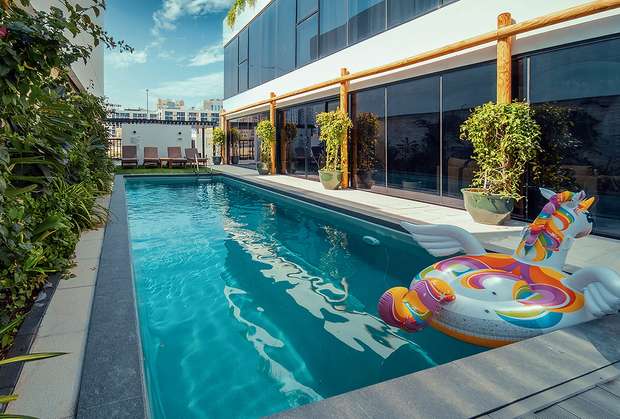Sustainable interior elegance is becoming more and more popular in Dubai, a city renowned for its ingenuity and extravagance. This change is about making environments that are culturally and environmentally relevant as well as aesthetically pleasing. Investigating the various components of this new trend reveals a creative mix of recycled materials, energy efficiency, and locally sourced resources that all contribute to a sustainable future without sacrificing elegance.

Historical Evolution of Interior Design in Dubai
Traditional Influences
The story of interior design in Dubai is deeply rooted in its rich cultural heritage. Traditional Emirati homes, with their wind towers and intricate latticework, have long inspired modern designers. These elements, which were inherently sustainable, utilising natural ventilation and local materials, are finding new expressions in contemporary spaces.
Transition to Modernity
As Dubai catapulted into the global spotlight, its interior design landscape underwent a dramatic transformation. The city’s rapid modernisation brought with it a blend of opulence and state-of-the-art aesthetics. However, this evolution didn’t overlook the sustainable roots; instead, it incorporated them into a more modern and global design language.
Global Influences
Dubai’s position as a global hub has introduced a plethora of international design influences. This cosmopolitan blend has led to a unique fusion where East meets West, and traditional designs are interwoven with modern sustainable practices, creating interiors that are both luxurious and environmentally conscious.
Key Elements of Sustainable Interior Elegance
Eco-Friendly Materials
At the heart of sustainable interior design in Dubai are eco-friendly materials. Designers are increasingly turning to sustainable woods, recycled metals, and innovative, eco-friendly products. These materials are not only better for the environment but also add a unique aesthetic value to interiors, blending luxury with responsibility.
Energy Efficiency and Technology
The integration of smart technology and energy-efficient appliances is revolutionising how homes and offices are designed. From automated lighting systems to high-efficiency air conditioning, these technologies not only reduce the carbon footprint but also enhance the living experience.
Natural Light and Space Utilisation
The use of natural light has become a cornerstone in sustainable design in Dubai. Architects and interior designers are focusing on creating spaces that maximise natural lighting, reducing the need for artificial lighting, and improving the overall energy efficiency. Thoughtful space planning also plays a vital role, ensuring that each area is utilised effectively, reducing waste, and creating harmonious, breathable spaces.
Leading Sustainable Interior Design Projects in Dubai
Residential Projects
Dubai’s residential sector has seen a surge in sustainable projects. Homes are being designed with a focus on sustainability, incorporating elements like solar panels, water-saving fixtures, and intelligent waste management systems. These homes are not just eco-friendly but are also setting new standards in luxury living.
Commercial Spaces
Commercial spaces in Dubai, including office buildings and retail outlets, are also embracing sustainable design. Features like green roofs, energy-efficient lighting, and eco-friendly materials are becoming commonplace, creating workspaces that are both innovative and responsible.
Public and Community Spaces
The commitment to sustainability extends beyond private spaces. Public areas like parks, community centres, and even public transport facilities are being designed with a focus on environmental sustainability. These spaces are not only functional but also serve as benchmarks for eco-friendly design.
Challenges and Solutions in Sustainable Design
Overcoming Material Limitations
One of the major challenges in sustainable design is sourcing materials that are both eco-friendly and meet the aesthetic standards of Dubai’s luxury market. Designers are increasingly collaborating with local and international suppliers to overcome this challenge, finding innovative materials that satisfy both criteria.
Balancing Cost and Sustainability
The perception that sustainable design is costlier is a significant hurdle. However, designers are working to debunk this myth by demonstrating how sustainable practices can actually lead to long-term cost savings, through energy efficiency and reduced maintenance.
Innovative Design Strategies
To overcome the common challenges in sustainable design, Dubai’s designers are employing innovative strategies. These include using locally sourced materials to reduce the carbon footprint, implementing advanced building techniques, and educating clients on the long-term benefits of sustainable design.
The Role of Government and Private Sector in Dubai’s Sustainable Interior Design
Government Initiatives
Dubai’s government has been instrumental in propelling the sustainable design movement forward. Through various policies and initiatives, such as green building regulations and incentives for sustainable practices, the government is actively encouraging designers and developers to adopt eco-friendly methods. These initiatives not only promote sustainability but also set a benchmark for the rest of the world.
Private Sector Contributions
The private sector in Dubai is not far behind in embracing sustainable practices. Many businesses are investing in green technologies and sustainable materials, recognising the long-term benefits and the growing demand for environmentally conscious designs. This shift is not just a corporate responsibility but also a response to the evolving preferences of consumers and investors who are increasingly valuing sustainability.
Collaborations and Partnerships
One of the most effective strategies in promoting sustainable interior design in Dubai has been the collaboration between the government and the private sector. These partnerships have led to innovative projects that serve as exemplary models of sustainability, combining luxury, functionality, and environmental responsibility.
Future Trends in Sustainable Interior Design in Dubai
Emerging Materials and Techniques
The future of sustainable interior design in Dubai looks promising with the advent of new materials and techniques. Innovations like bio-based materials, 3D printing in construction, and the use of renewable energy sources are expected to take centre stage, further revolutionising the industry.
Technology Integration
The role of technology in sustainable design is set to grow exponentially. From AI-driven design tools to IoT-enabled smart homes, the integration of technology will not only make sustainability more achievable but also more efficient and user-friendly.
Shaping the Future Landscape
As we look forward, it’s clear that sustainable interior design will play a pivotal role in shaping the urban landscape of Dubai. This trend is not a passing fad but a fundamental shift in how we think about design, living spaces, and our relationship with the environment.
In conclusion, the journey of sustainable interior elegance in Dubai is a testament to the city’s innovative spirit and commitment to a greener future. From the incorporation of traditional elements to the embrace of cutting-edge technologies, Dubai is redefining luxury and sustainability in interior design. As designers, developers, and consumers become more conscious of their environmental impact, sustainable design is moving from a niche preference to a mainstream necessity. The future of interior design in Dubai is not just about aesthetics but about creating spaces that are environmentally responsible, technologically advanced, and culturally rich, ensuring a sustainable legacy for generations to come.
